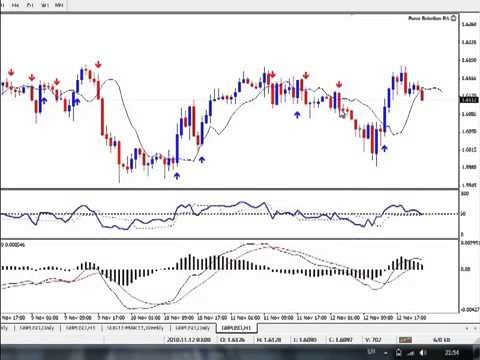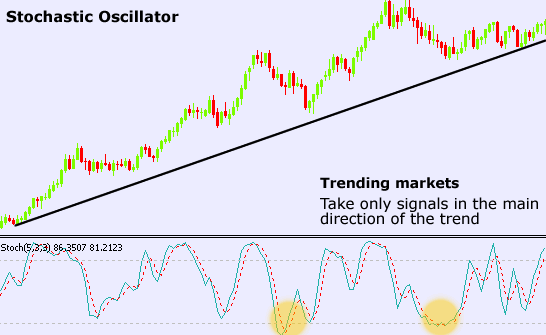The Top Technical Indicators For Options Trading
Post on: 19 Октябрь, 2015 No Comment

There are hundreds of technical indicators available which are used by traders according to their style of trading and securities to be traded. This article focuses on a few important technical indicators specific to options trading. (Confused? If you are not sure that technical trading or options is for you, check out or tutorial, Introduction to Stock Trader Types. to decide your preferred style.)
This article assumes familiarity of the reader with options terminology and calculations involved in technical indicators.
How option trading is different
Usually, technical indicators are used for short term trading. Compared to a typical stock trader, an option trader looks for additional aspects of trading:
- Range of movement (How much — volatility),
- Direction of the move (Which way) and
- Duration of the move (How long — time)
Since options are decaying assets (see time decay of options ), the holding period takes significance for options trading. A stock trader has the liberty to hold the position indefinitely or even convert the short term margin leveraged position into a cash based holding. But an option trader is constrained by the limited duration due to the option expiry date where there is no choice to hold an option position indefinitely. It hence becomes important to select the correct trading strategies taking into consideration the timing factor.
Due to the above constraints, almost all of the technical indicators suitable for options trading are momentum indicators, which tend to identify overbought and oversold markets, and hence price reversals and related trends.
The following technical indicators are commonly used for options trading:
A technical momentum indicator that compares the magnitude of recent gains to recent losses in an attempt to determine overbought and oversold conditions of an asset.
How is RSI useful for option trading?
RSI attempts to determine overbought and oversold conditions of a security. It thereby provides vital indications about the short term price moves, or rather corrections and reversals, once the overbought or oversold condition is identified.
RSI works best for options on individual stocks (instead of indexes), as stocks demonstrate the overbought and oversold condition more frequently as compared to indexes. Options on highly liquid high beta stocks make the best candidates for short term trading based on RSI. (Check out Investopedia’s detailed article on RSI with example s)
As standard parameters commonly followed, RSI values range from 0-100. A value above 70 indicates overbought levels, and that below 30 indicates oversold.
All options traders are aware of the importance of volatility on options valuation. Bollinger bands capture this aspect of an underlying security, allowing upper and lower ranges to be identified within dynamically generated bands based on recent price moves of the security.
Two important indications which are derived from Bollinger Bands:
- The bands expand and contract as volatility increases or decreases based on the recent price movement of the stock (expansion indicates high volatility and contraction indicate low volatility). The trader can thus take option positions expecting a reversal.
- The current market price can be assessed against the current band range for any breakout patterns. Breakout above top band indicates overbought market, which is ideal indication for buying puts or shorting calls. Breakout below lower band indicates oversold market – an opportunity to buy calls or short puts at lower volatility. Care should be taken to assess volatility – shorting options at high volatility is beneficial, as it gives higher premiums to the trader, while buying options at lower volatility provides cheaper options.

Traders are free to use their own desired values while looking at Bollinger bands. Commonly followed values are 12 for simple moving average and 2 for standard deviation for top and bottom bands.
- Intraday Momentum Index (IMI):
For high frequency options traders, the IMI indicator offers a good choice of technical indicator to bet on intraday option trades. It combines the concepts of intraday candlesticks and RSI, thereby providing a suitable range (similar to RSI) for intraday trading by indicating overbought and oversold markets. However, it is important to additionally be aware about the “trendiness” of the price moves, because when there is a strong visible up/down trend, the momentum indicators will frequently show overbought/oversold opportunities. Being aware of the trends, and additionally using IMI, a trader can spot potentials where he can get into a long position in an uptrending market at intermediate intraday corrections and short positions in a downtrend market at intermediate price bumps.
IMI is calculated as follows:
1. If Close > Open: Gains = Gain (n-1) + (Close — Open); Losses = 0
2. If Close < Open: Losses = Loss (n-1) + (Open — Close); Gains = 0
3. Add Gains and Losses for past n chosen periods
4. IMI = 100 x (Gains / (Gains + Losses))
Taking benefits of leverage with option positions, the IMI indicator (combined with a suitable trend following indicator) offers a great technical indicator for options trading.
The formula offers flexibility to traders to use their own desired values for n. Commonly followed resultant values are 70 or higher indicating overbought markets, and 30 or below indicating oversold markets. The interpretation remains similar to RSI discussed above.
Adding further to the RSI basket, the MFI is another momentum indicator that combines the price and volume data to identify price trends for a stock. It is also known as volume-weighted RSI.
With volume considered into calculations, the MFI indicator provides vital inputs about the amount of capital flowing in and out of a stock over a recent time period (recommended 14 days).
Due to dependency on volume data, MFI indicator is suited for stock based options trading (instead of index based), and fairs better for long duration option trading instead of frequent intraday. Traders look for cases when MFI indicator moves in opposite direction to that of stock price, as this can be a leading indicator to predict a trend reversal.
Commonly followed resultant values for the Money Flow Index are 20 indicating oversold and 80 indicating Overbought.
The put call ratio indicates the ratio of trading volume of put options to call options. Instead of the absolute value of the Put Call ratio, the changes in its value indicate a change in overall market sentiment.
A high to lower value move indicates a bullish trend, indicating more calls being opted for by the traders, while a low to high value move indicates bearish trend as more puts are of interest in the market.
Open interest indicate the open or unsettled contracts in options. OI does not necessarily indicate any specific uptrend or downtrend, but it does provide indications about the end of a particular trend. Increasing open interest indicates new capital inflow and hence sustainability of the existing up or down trend, while declining open interest indicates an end to the trend.
For options trading where traders look to benefit from short term price moves and trends, OI provides important information beneficial for entering into or squaring off option positions.
OI values, in addition to the traded volume and price movements, are frequently used by option traders. Here is an indicative interpretation for OI and price moves:














